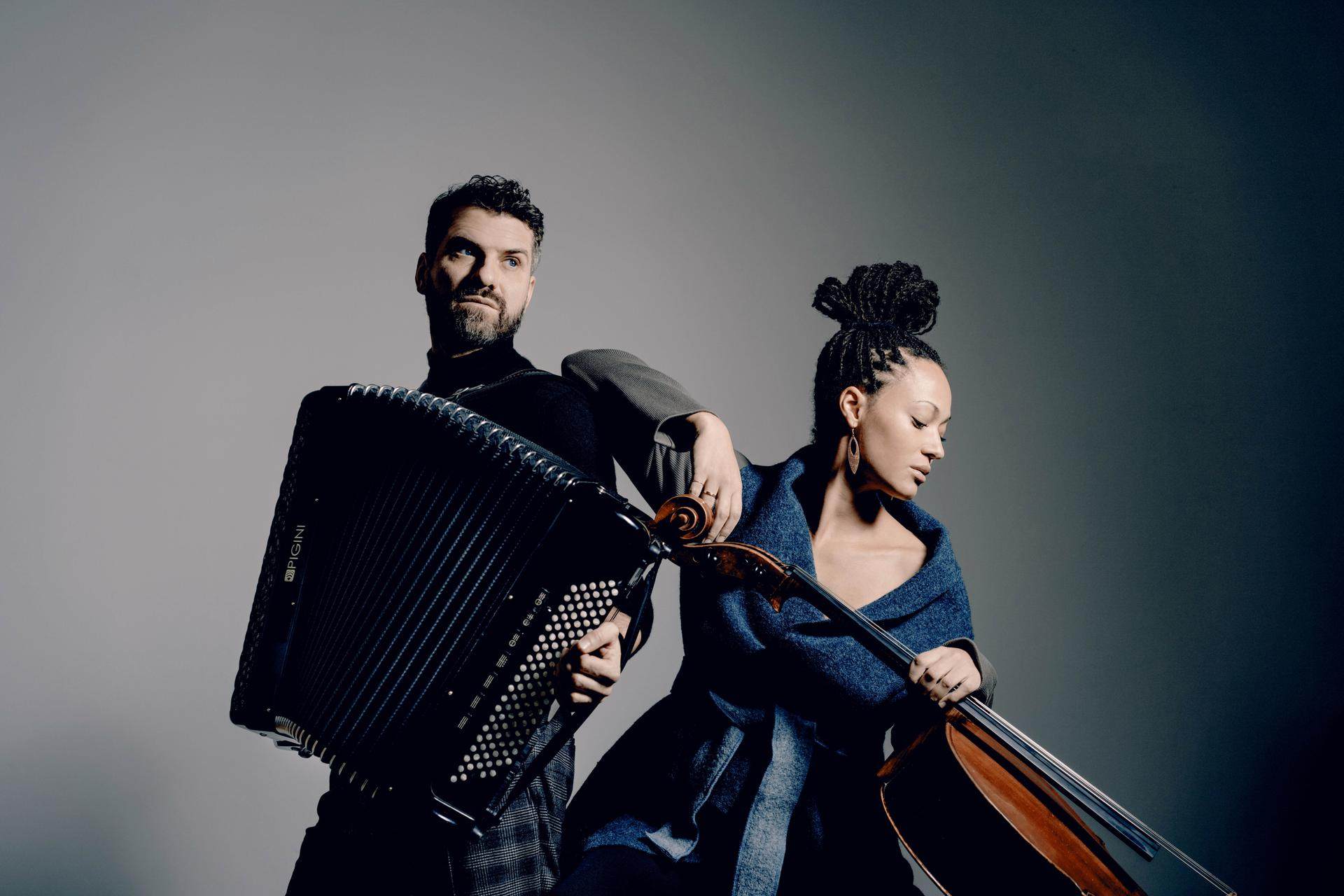Spaemann and Bakanic
October 2025 | ||||||
|---|---|---|---|---|---|---|
Mo | Tu | We | Th | Fr | Sa | Su |
The program Splits & Circles deals with divisions - what happens when political issues drive a family apart, a young mother has to leave her country, or the search for one's own identity leads to alienation at first. But it also tells stories of the everlasting comforting vastness of nature, of circles that close, of coming together, of letting each other be and poses the question of whether the growing self-optimization hype in the west can perhaps lead to more individual and therefore whole-societal peace after all.
The simultaneity of these opposites is what fascinates Spaemann and Bakanic just as much as the diversity of their musically different influences. Whether in a soulful pop song or a tango-influenced instrumental piece, the two musicians are interested in the many timbres that can be elicited from the cello and accordion. They play a game that ranges between chamber music and produced songs, in which the live vibe is never lost, but in which a pop song can also be a pop song.
Program and cast
Marie Spaemann: cello, vocals
Christian Bakanic: accordion, piano, cajon, vocals
PORGY and BESS Jazzclub
Porgy & Bess (actually, Jazz and Music Club Porgy & Bess ) is a jazz club in the Riemergasse 11 in the 1st district of Vienna. The club , founded in 1993 is considered " the most important jazz organizer and trendy meeting point " of the Austrian capital .
The program of Porgy & Bess speaks to a very large audience , about 70,000 guests a year ; is accordingly Jazz " understood very pluralistic ," and the program " even in fringe areas , such as electronic music , contemporary music and world music penetrated . " Many international artists , particularly from the U.S. space , see also Austrian musician here an opportunity to perform . The club also offers the stage for events, such as the award of the Austrian World Music Award.
Musicologist Christian Scheib According to the Porgy & Bess " at the same time essential for the development of the musical ( jazz ) reality of a City" and needs and uses ' plain commonplace as urban space music. " It creates itself " through artistic preferences, acoustic quality , capacity and real capacity, the necessary exclusion of other clubs. " Here, the different areas of the jazz clubs allow - the area in front of the stage with tables, upstairs gallery , a lateral area with a bar at counter - different intense concentration on the concert scene . For Jazzthetik Porgy & Bess is even a " traditional club . "

 EN
EN DE
DE IT
IT FR
FR ES
ES RU
RU JP
JP RO
RO
 Seating plan
Seating plan 